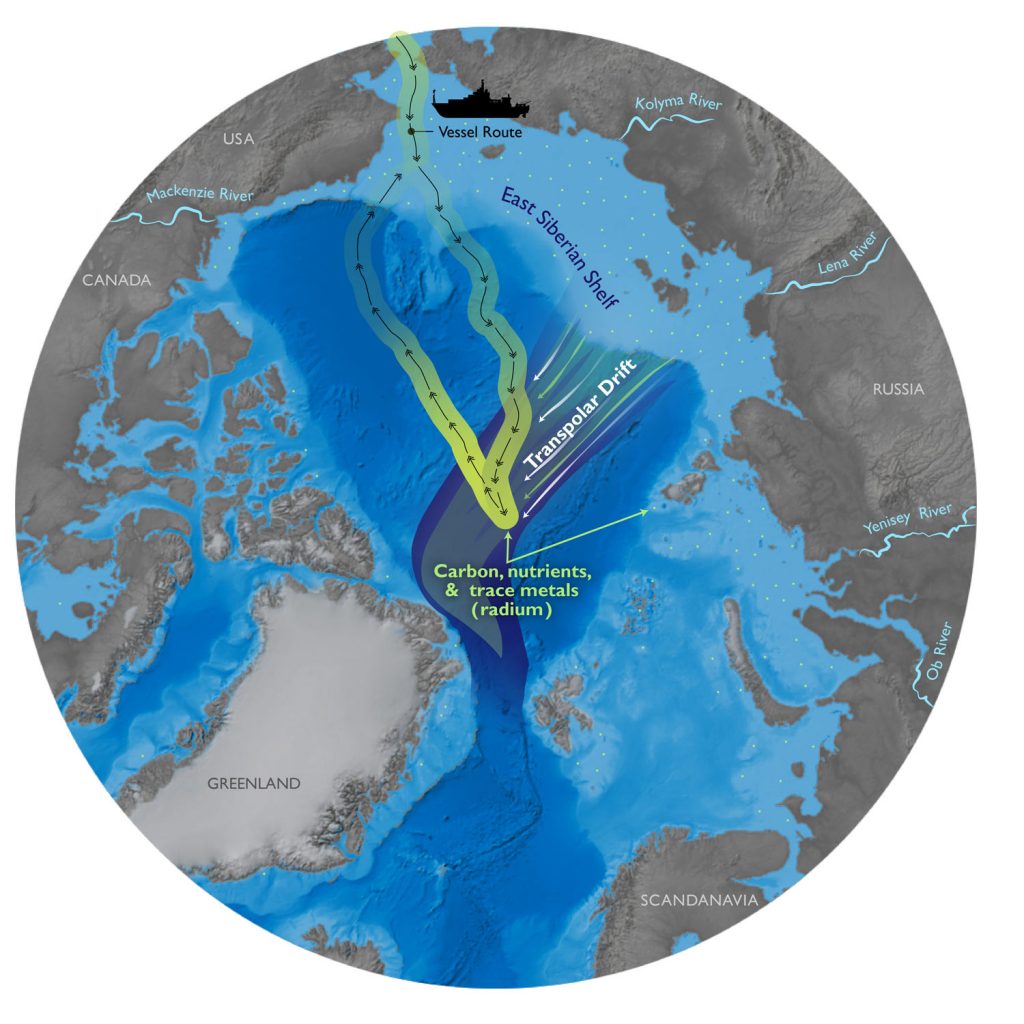Land inputs in the Arctic transported up to the North Pole
M. Charette and his colleagues (2020, see reference below) gathered data on trace elements, radionuclides, dissolved organic matter and many ancillary parameters collected as part of the two Arctic GEOTRACES cruises conducted in 2015 (U.S. GEOTRACES GN01 and German GEOTRACES GN04). They revealed that freshwater runoff from rivers and continental shelf sediments are bringing significant quantities of carbon and trace elements into parts of the Arctic Ocean via the Transpolar Drift—a major surface current that moves water from Siberia across the North Pole to the North Atlantic Ocean. Surprisingly, trace elements are barely scavenged at the land-ocean contact. This is due to the fact that in the Arctic, these elements are strongly bound with abundant organic matter from rivers, which allows the mixture to be transported into the central Arctic, over 1,000 kilometers from their source and acting as surface water fertilizer.
Higher concentrations of trace elements and nutrients previously locked up in frozen soils (permafrost) are expected to increase as more river runoff reaches the Arctic, a hot spot of the climate warming. However, while an increase in nutrients may boost Arctic marine productivity, the authors caution that the continued loss of sea ice will further exacerbate climate warming, which will impact ecosystems more broadly.

Reference:
Charette, M. A., et al. (2020). The Transpolar Drift as a Source of Riverine and Shelf-Derived Trace Elements to the Central Arctic Ocean. Journal of Geophysical Research: Oceans, e2019JC015920. DOI: https://doi.org/10.1029/2019jc015920
